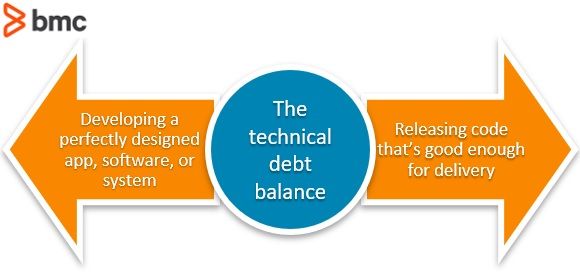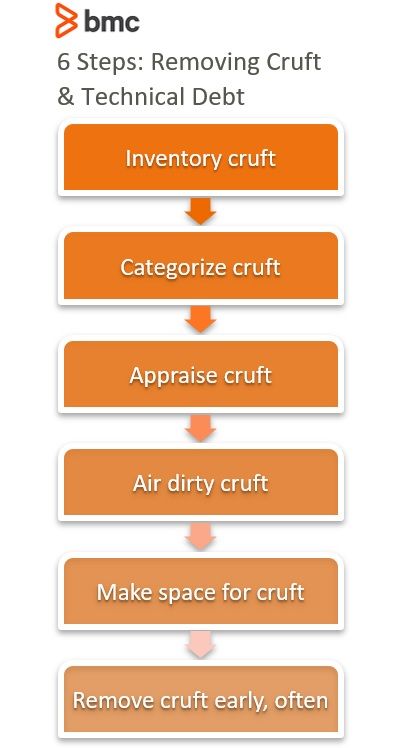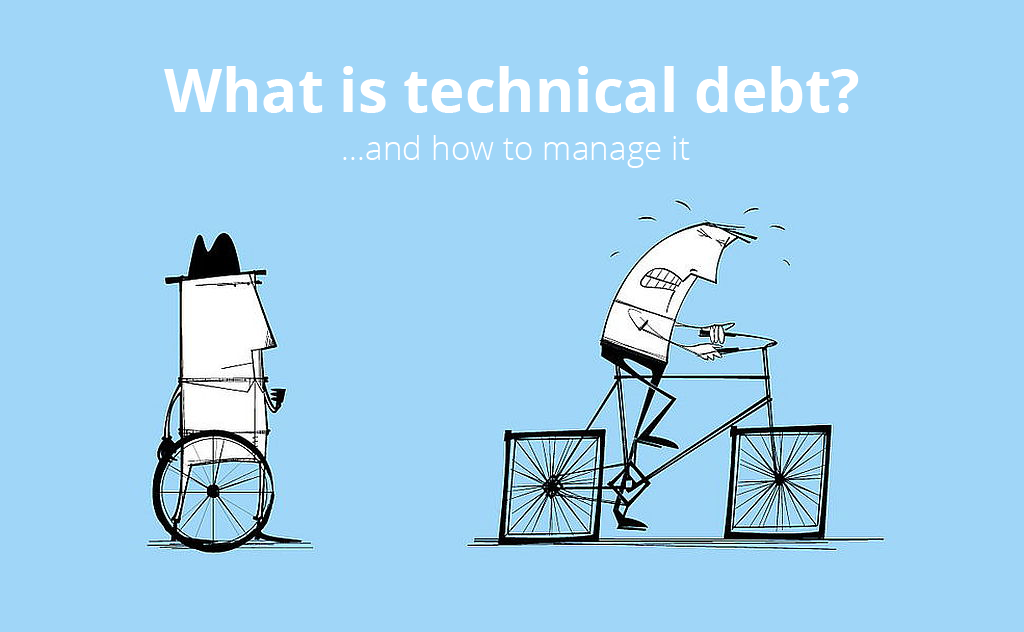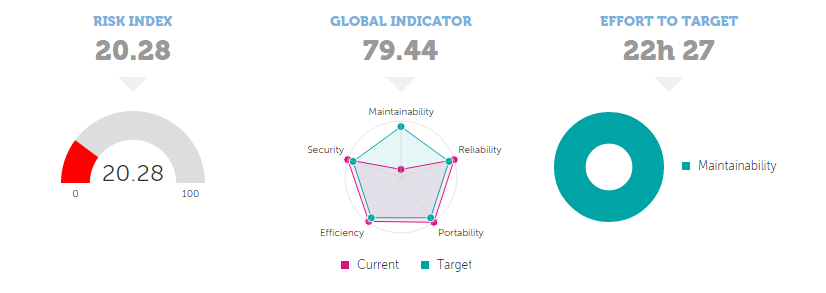14+ Tech debt categories ideas in 2021
Home » techno idea » 14+ Tech debt categories ideas in 2021Your Tech debt categories images are ready in this website. Tech debt categories are a topic that is being searched for and liked by netizens now. You can Find and Download the Tech debt categories files here. Download all free images.
If you’re searching for tech debt categories images information connected with to the tech debt categories keyword, you have pay a visit to the ideal site. Our website frequently gives you suggestions for refferencing the maximum quality video and image content, please kindly surf and locate more enlightening video content and graphics that fit your interests.
Tech Debt Categories. Bugs in the code might surface after release of a fast production thus incurring technical debt to fix them. Technical debt can be a conscious decision like a real loan. Technical debt is a powerful and useful metaphor for dealing with the compromises we make when building software. Technical debt or tech debt for short is the resulting back-end inadequacies of an application from either inadvertent error or prioritizing speed of delivery over quality.
 Programming Style From martinfowler.com
Programming Style From martinfowler.com
Inadvertent Technical Debt Unintentional poor practices technology choices design and implementation driven by staff that did not know better. Defining technical debt and cruft The technical debt concept is that the debt represents the extra development work that arises when mediocre code is implemented in the short run despite it not being the best quality overall solution. The first step is to measure everything that contributes to the technical debt. Let me briefly explain how to calculate each of these technical debt components. Functional Debt vs Technical Debt. A very useful approach for dealing with this is catagorization of technical debt.
Code duplication code complexity test coverage dependency cycles and coupling lack of documentation and programming rules violations.
Technical debt or tech debt for short is the resulting back-end inadequacies of an application from either inadvertent error or prioritizing speed of delivery over quality. Let me briefly explain how to calculate each of these technical debt components. Code duplication code complexity test coverage dependency cycles and coupling lack of documentation and programming rules violations. Inadvertent Technical Debt Unintentional poor practices technology choices design and implementation driven by staff that did not know better. The technical debt associated with a product displaying volatile performance is related to fixing bugs system crashes and engineers bandwidth. Here is just one way.
 Source: researchgate.net
Source: researchgate.net
A very useful approach for dealing with this is catagorization of technical debt. A very useful approach for dealing with this is catagorization of technical debt. The mediocre codewhich is usually redundant poorly designed useless or all threeis called cruft. Let me briefly explain how to calculate each of these technical debt components. The first step is to measure everything that contributes to the technical debt.
 Source: brainhub.eu
Source: brainhub.eu
Here is just one way. Unfortunately it has become a catch-all term for many different kinds of issues and problems leading to confusion and devaluation of the term. The mediocre codewhich is usually redundant poorly designed useless or all threeis called cruft. We then covered a couple of scenarios that show taking on technical debt can be a strategic decision that helps the business in Part 2. The former cause is somewhat inevitable and generally results from not having the proper checks and balances in place.
 Source: getclockwise.com
Source: getclockwise.com
These choices accumulate over time and eventually you need to pay them down. Technical debt or tech debt for short is the resulting back-end inadequacies of an application from either inadvertent error or prioritizing speed of delivery over quality. Bugs in the code might surface after release of a fast production thus incurring technical debt to fix them. Here is just one way. Functional Debt vs Technical Debt.
 Source: softwaretestinghelp.com
Source: softwaretestinghelp.com
January 2 2021. If you dont maintain the deliberate technical debt compromises in your backlog they become folklore and eventually become inadvertent technical debt. The mediocre codewhich is usually redundant poorly designed useless or all threeis called cruft. There are many ways of categorizing technical debt. Let me briefly explain how to calculate each of these technical debt components.
 Source: softwarebrothers.co
Source: softwarebrothers.co
Code duplication code complexity test coverage dependency cycles and coupling lack of documentation and programming rules violations. If you dont maintain the deliberate technical debt compromises in your backlog they become folklore and eventually become inadvertent technical debt. While economists are worried about the world economic debt close to 260 trilliion or over 330 of GDP it is very strange that the IT industry is not taking its Technical Debt seriously enough. And Ill briefly mention a fifth category that doesnt fit well with these axes. Here is just one way.
 Source: bmc.com
Source: bmc.com
While economists are worried about the world economic debt close to 260 trilliion or over 330 of GDP it is very strange that the IT industry is not taking its Technical Debt seriously enough. Technical debt can be a conscious decision like a real loan. Intentional vs unintentional and known vs unknown. Technical debt or tech debt for short is the resulting back-end inadequacies of an application from either inadvertent error or prioritizing speed of delivery over quality. Technical debt is a powerful and useful metaphor for dealing with the compromises we make when building software.
 Source: bmc.com
Source: bmc.com
Intentional vs unintentional and known vs unknown. Unfortunately it has become a catch-all term for many different kinds of issues and problems leading to confusion and devaluation of the term. These choices accumulate over time and eventually you need to pay them down. Here is just one way. Technical debt is a powerful and useful metaphor for dealing with the compromises we make when building software.
 Source: brainhub.eu
Source: brainhub.eu
A very useful approach for dealing with this is catagorization of technical debt. In Part 1 we discussed the different categories of technical debt you may encounter in various projects. From the perspective of interest payment we could classify technical debt as eventually repaid refactoring on a daily basis debt tends to zero sustainable refactoring regularly debt is constant or compound growth adding new features but not refactoring exponential growth of debt. Defining technical debt and cruft The technical debt concept is that the debt represents the extra development work that arises when mediocre code is implemented in the short run despite it not being the best quality overall solution. Unfortunately it has become a catch-all term for many different kinds of issues and problems leading to confusion and devaluation of the term.
 Source: brainhub.eu
Source: brainhub.eu
In Part 1 we discussed the different categories of technical debt you may encounter in various projects. In Part 1 we discussed the different categories of technical debt you may encounter in various projects. Bugs in the code might surface after release of a fast production thus incurring technical debt to fix them. Technical debt is a powerful and useful metaphor for dealing with the compromises we make when building software. Here is just one way.
 Source: melv1n.com
Source: melv1n.com
By infraBlog In Technical Debt 1 Comment. From the perspective of interest payment we could classify technical debt as eventually repaid refactoring on a daily basis debt tends to zero sustainable refactoring regularly debt is constant or compound growth adding new features but not refactoring exponential growth of debt. Technical debt or tech debt for short is the resulting back-end inadequacies of an application from either inadvertent error or prioritizing speed of delivery over quality. Inadvertent Technical Debt Unintentional poor practices technology choices design and implementation driven by staff that did not know better. The former cause is somewhat inevitable and generally results from not having the proper checks and balances in place.
 Source: martinfowler.com
Source: martinfowler.com
In this third post we will help you create a plan for tackling existing technical debt. Let me briefly explain how to calculate each of these technical debt components. Intentional vs unintentional and known vs unknown. The mediocre codewhich is usually redundant poorly designed useless or all threeis called cruft. The technical debt associated with a product displaying volatile performance is related to fixing bugs system crashes and engineers bandwidth.
 Source: thinkapps.com
Source: thinkapps.com
Code duplication code complexity test coverage dependency cycles and coupling lack of documentation and programming rules violations. A discussion of two forms of the Agile principal of accumulating debt Technical Debt and Functional debt how these forms differ and why they are created. We then covered a couple of scenarios that show taking on technical debt can be a strategic decision that helps the business in Part 2. Intentional vs unintentional and known vs unknown. The former cause is somewhat inevitable and generally results from not having the proper checks and balances in place.
This site is an open community for users to do sharing their favorite wallpapers on the internet, all images or pictures in this website are for personal wallpaper use only, it is stricly prohibited to use this wallpaper for commercial purposes, if you are the author and find this image is shared without your permission, please kindly raise a DMCA report to Us.
If you find this site adventageous, please support us by sharing this posts to your own social media accounts like Facebook, Instagram and so on or you can also bookmark this blog page with the title tech debt categories by using Ctrl + D for devices a laptop with a Windows operating system or Command + D for laptops with an Apple operating system. If you use a smartphone, you can also use the drawer menu of the browser you are using. Whether it’s a Windows, Mac, iOS or Android operating system, you will still be able to bookmark this website.